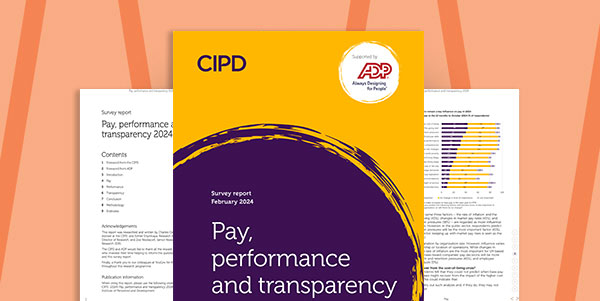The UK’s exit from the European Union—otherwise known as Brexit—has forever changed the relationship between the UK and the EU. Following the referendum held in June 2016, it took years for UK politicians to whittle out a deal, faced with cross-party infighting on how to deliver Britain’s exit from the EU. Brexit was finally completed in January 2020.
The UK economy remains in a fragile state after Brexit, which created a variety of new compliance challenges for employers. Four years down the line, we’re in a better place to understand the long-term impacts of Brexit, particularly how it affects payroll compliance for UK employers.
Before Brexit, UK payroll compliance operated under a unified framework of European Economic Area (EEA) directives, consistent across member states. These included worker's rights affecting payroll such as overtime, annual leave and data protection. While each country has its own tax laws and corporate customs, there’s a minimum requirement to meet these basic standards of workers’ rights across the bloc.
Pre-Brexit, UK employers managing the task of multi-country payroll enjoyed a relatively predictable regulatory environment, with straightforward guidelines on how to manage workers’ rights and payroll within the European context. The UK also benefitted from a vast pool of talent inside the EU, with a relatively quick process for obtaining work visas for EU candidates.
When the UK left the EU, there was a great deal of uncertainty around British worker’s rights, and what would be kept or shelved by the conservatives. Some laws are still being decided in the courts today.
The immediate aftermath of Brexit
The early days of the post-Brexit landscape were defined by a chaotic transitional period, with slow-to-rollout policies that seemed to lack much clarity for British businesses.
Adding to this sense of uncertainty was the COVID-19 pandemic, which posed a raft of new challenges. Former UK Prime Minister Boris Johnson self-imposed a deadline for the UK to ‘get Brexit done’, refusing to delay the transition period.
In the immediate aftermath of Brexit, UK employers were forced to stay vigilant, anticipating news about EU workers' rights amid growing public uncertainty on the rights of British workers, such as holiday pay and sick leave.
The end of the freedom of movement between the UK and the EU was the first large-scale Brexit change impacting payroll and HR.
EU nationals who arrived after January 1, 2021, needed to apply through the UK’s new points-based immigration system. HR and payroll functions became responsible for right-to-work checks, making sure EU staff were eligible to work in the UK under the new rules, resulting in a heavy administrative burden for employers.
With the UK’s withdrawal from the EU Social Security Coodination Regulations (the legal framework for protecting EU citizens’ social security rights when working and moving around Europe), employers rushed to understand the new rules and tax implications for payroll.
The new rules ensure workers who move between the UK and the EU only have to pay into one country's social security system. These contributions (or NICs) would need to be expertly managed by payroll functions to avoid double taxation or non-compliance issues.
Four Years On: A Comprehensive Evaluation
Four years on, the picture is a little clearer. Early predictions of widespread chaos and disruption have gone unrealised, but there have been significant bumps along the road.
Leaving the EU has "not perfectly matched initial perceptions", says Sanjay Vallabh, managing director of Vallabh Associates. “The reality has been marked by complexities and disruptions" but similarly, "some of the dire predictions of economic collapse did not materialise".
Key Areas Affected
- Taxation and Social Security Contributions: Tax rates have not materially changed due to Brexit, but the layers of added complexity in managing tax for EU nationals have increased overhead costs for employers.
The EU Social Security Coordination Regulations enabled cross-border recruitment, with one-size-fits-all rules on taxation and social security across the EU. It was relatively easy to hire and onboard employees from the EU. Following Brexit, this has become much more complex.
The UK negotiated separate agreements with individual EU countries to replace the former EU-wide agreement, which varied in complexity depending on the country and the EU employee’s unique circumstances. In order to work in the UK, EU workers need a Certificate of Coverage to show where they are liable to pay social security contributions to avoid ‘double taxation’ or paying contributions twice.
In some cases, depending on the agreement, workers may end up paying higher social security contributions, especially if their work spans multiple countries, or if they fail to obtain a certificate of coverage. For UK employers, this means navigating a whole new world of tax treaties and making sure payroll deductions meet new country-specific rules. - Immigration and Right to Work: The end of freedom of movement creates new barriers to employment in the UK for EU citizens (and vice versa), now treated as ‘third countries’. The UK insists on a points-based system, and minimum income requirements, before granting a visa to EU workers.
The task has fallen on employers to verify the immigration status of potential employees, making sure they have the right visas and work permits—generating a barrage of paperwork for HR teams.
Compliance checks and due diligence should be carried out regularly to avoid eye-watering fines for those classified as unable to work in the UK—up to £45,000 for each employee who is misregistered. These Right to Work rules pose existential challenges to recruiting EU talent, as the administrative costs of hiring and payroll compliance continue to grow. - Data Protection and GDRP: While the UK decided to retain the EU’s General Data Protection Regulation (GDPR) within domestic law, the government included a clause of independence to keep this framework open to review. In special cases, cross-border data transfers between the UK and EU may require additional safeguards if dealing with personal data relating to immigration. This could be a headache for payroll teams handling sensitive employee data across borders. The current UK/EU GDPR bilateral agreement is expected to last until 27 June 2025, a date HR teams should mark on their calendar.
- Employment Law Adjustments: Subject to much consternation at the time of Britain’s exit from the European Union, employment laws detailing maximum working hours, rest breaks and holiday pay weren’t substantially altered in the immediate aftermath of Brexit. However, the former conservative government suggested a review and possible amendment of the EU-derived Working Time Directive.
In 2022, the Harpur Trust v Brazel decision by the UK Supreme Court changed how earnings should be calculated for part-time or seasonal workers—which confirmed that employers should calculate holiday pay based on average earnings over 52 weeks, diverging from EU guidelines. In 2024, the government expanded rights for employees around flexible working, paid and unpaid leave, and protection from redundancy during parental leave. Payroll teams should update their systems to reflect these changes.
Adapting to Change: Strategies for Employers
To navigate the ever-changing landscape of post-Brexit compliance, UK employers are turning to new strategies to carefully adapt. Digital payroll systems are a godsend for employers managing multi-country payroll in the age of Brexit. They’re designed to automate the complex calculations involved in hiring and paying people from the EU—and remove the burden of uncertainty around compliance.
For instance, payroll systems like ADP’s can automatically calculate the country-specific withholdings of an EU worker’s social security contributions. These automated systems ensure that compliance is always maintained, even if UK regulations suddenly change.
Brexit legislation is still evolving, four years on. Its impact on payroll compliance can’t be overlooked, so it’s essential that you keep updated on new changes, and consider how they might affect your compliance efforts.
Investing in ongoing education and professional development in payroll compliance can give your teams the resources they need so they’re properly equipped to deal with new challenges as they arise.
The Future of Payroll Compliance in a Post-Brexit UK
The UK’s exit from the European Union has led to several major regulatory shifts and compliance challenges. With increasingly complex bureaucracy, it’s even harder for UK companies to stay compliant and cost-efficient when managing payroll in the post-Brexit landscape.
And it doesn’t look like things will get much easier when it comes to payroll compliance. New government legislation has expanded rights for employees on flexible working, paid and unpaid leave, and protection from redundancy during parental leave. Further reviews of the EU-inherited Working Time Regulations are expected to come, which will impact how businesses calculate paid leave and overtime. UK employers should stay savvy about these changes, which will affect payroll calculations and compliance.
The current GDPR agreement between the UK and the EU is expected to last until 27 June 2025, and will only be renewed if the UK continues ‘to afford EU residents' data an adequate level of protection’, as decided by the EU’s data protection commissioner. Data managers should take note.
As the new UK Prime Minister Keir Starmer seeks to forge a closer relationship with Europe, it’s possible that new negotiations and trade agreements, such as the EU Trade and Cooperation Agreement, due to for review in May 2026, will help shape future compliance landscapes for the better.
For many, it seems Brexit isn’t ‘done’ yet.




